Happy 243rd Birthday, AMERICA!

Our Nation celebrates the signing of the Declaration of Independence each year with breathtaking fireworks, parades, family fun, and America’s favorite past-time (baseball). Yet, aside from signing the document that covers the U.S.A. with a blanket of independence, what historical knowledge do we really have as a nation that allows us to delve deeper into our celebration of freedom (as individual and collective citizens). Just think for a moment, what fast-facts can we share with others (who are not well-versed in our nation’s history), that depict our departure from Great Britain? This question is posed merely as a personal barometer, because obtaining freedom is one thing… but asking Americans to detail the ‘what-and-why’ behind our freedom – sparks a conversation that tends to get lengthy. Yes, we’re among the first to attend BBQ cookouts, wear flip-flops and revel in all manner of outdoor amusement; however, when it comes down to recalling events that set our nation free – the lines become a bit blurred. So, in order to help thin the haze surrounding this part of our nation’s history, our team has dusted off the history books – to help keep the occasion knowledgeable, memorable and blissful.
The Declaration of Independence
We celebrate American Independence Day on the Fourth of July every year; yet, interestingly enough, July 4, 1776, was not the precise day our nation branched out on its own. But, wait—before we work our way into a mini civics session, let’s first discuss what July 4th is not. Contrary to popular belief, it is not the day our U.S. Continental Congress decided to declare its freedom; instead, representatives from 12 of the 13 colonies came together on July 1, 1776 and later voted on July 2, 1776 – in favor of Richard Lee’s motion for independence (New York abstained, as its representatives did not have permission to vote at that time). July 4th 1776, was not the day the United States took its position in the American Revolution (which began in April 1775, arising from tensions between American colonists and British authorities over taxation – Stamp Act of, 1765, Townshend Tariffs, 1767 and The Tea Act, 1773), which resulted in heated protests among colonists who resented the lack of representation in British Parliament.
So, what actually happened on July 4, 1776?
Delegates at the Second Continental Congress meeting in Philadelphia – approved the final wording (verbiage) of the Declaration of Independence on July 4, 1776. Yes, a massive grammatical edit was carried out after the draft was submitted on July 2nd, with everyone present and in agreement on all content and required changes. The 4th was the date that was boldly printed atop the Dunlap Broadsides (the first 150-200 reproduction copies of the Declaration of Independence, printed the night of July 4, 1776, by John Dunlap of Philadelphia). So, when early Americans thought of the Declaration of Independence, guess what date readily came to mind? That’s right, July 4, 1776, was the date etched into their memory, which grew into tradition and later became a cultural designation we look forward to each year. The 4th of July, is the date our documents for freedom were adopted; but, here’s the unique part about how ‘document-adoption-dates’ work in contrast to our Declaration; the United States also celebrates Constitution Day on September 17th of each year (based on the date the Constitution was signed, not the date it was approval (ratified). Now, if we were to follow the ‘U.S. Constitution Day’ celebration-model for the Declaration of Independence, we would be celebrating Independence Day on August 2nd of each year, rather than July 4th.
How did the Fourth of July become a national holiday?
Notwithstanding the first 15 or 20 years after the Declaration was written, our nation’s citizens fully knew the significance of our national accomplishment; however, we did not celebrate as openly as we do today. The lack of celebration for the inception of freedom, was based largely on the magnitude of events that were happening in our young nation at the time of ratification (battles, evacuations, as well as the independent declarations of states’ rights). By the 1790s, a time of bitter partisan conflict had become common place, causing the Declaration to be tested by controversy from the Democratic-Republican Party (the one party, formed by Thomas Jefferson and James Madison, that now serves as two separate parties in present day American politics). The conflict stemmed from support of Jeffersonian ideals being advanced against Federalist perceptions of what our nation should become.
After the War of 1812, the Federalist party began to disband; however, prior to dissolution, new parties of the 1820s and 1830s began adopting Jeffersonian views and sharing the beliefs of the Democratic-Republicans (who believed the Constitution was a ‘strict’ document that clearly limited the powers of the federal government to affect warranted change), and these parties began to echo Democratic-Republican views. By 1817, John Adams had complained in a letter that America seemed uninterested in its past (but, as we know from a famous letter to his wife Abigail, his views changed). As time marched on – the tradition of July 4th coupled with the dual deaths of President Thomas Jefferson and President John Adams (deaths occurred simultaneously on July 4, 1826, within 5 hours of the other), helped fuel the idea of July 4th being a standout date for unity and celebration, despite political variances. Celebrations of the Fourth of July have become more-and-more common, and historians believe Adams’ prediction of how well celebrated the freedom of our nation would become – was more accurate than even he could have imagined (in a letter to his wife Abigail) :
“…I am apt to believe that it will be celebrated, by succeeding Generations, as the great anniversary Festival. It ought to be commemorated, as the Day of Deliverance by solemn Acts of Devotion to God Almighty. It ought to be solemnized with Pomp and Parade, with Shews, Games, Sports, Guns, Bells, Bonfires and Illuminations from one End of this Continent to the other from this Time forward forever more.”
In 1870, almost one hundred years after the Declaration was written, Congress declared July 4th to be a national holiday. When we look back on our nation’s history, it is important to know what events transpired (and why), because it is the unity and consistency of our people and our nation that benefits from what we know, and how we decide to move our nation forward in the years to come.
The TZelementMAG salutes our nation for its strength and bravery, and we pray for safe celebrations as we reflect on our history and look ahead to our future together.
Happy 243rd Birthday, America… WE LOVE YOU!



